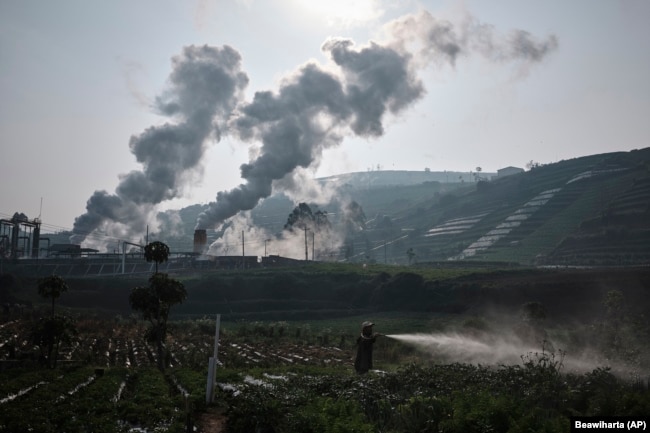AUDIO
Geothermal Development Faces Barriers in Southeast Asia

Indonesia and the Philippines aim to increase their use of geothermal energy to move away from highly polluting fossil fuels.
However, money issues, governmental rules, and community protests have slowed the growth of geothermal energy production.
Geothermal energy uses heat from underground reservoirs of hot water to produce electricity. Environmental experts see geothermal as a good source of clean energy because it can provide power 24 hours a day. Geothermal power plants also require little maintenance and can last for many years.
Countries with high geothermal possibilities — such as the United States, Indonesia and the Philippines — have areas where volcanic activity naturally carries hot water or steam to the Earth’s surface. The hot water or steam can also be reached by drilling into the ground.

Marit Brommer is head of the International Geothermal Association based in Germany. She told The Associated Press, “We’re essentially standing on our own sun, which we can get clean, reliable energy from.”
Geothermal energy in Southeast Asia
In Southeast Asia, geothermal energy production is expected to increase ten times greater from 2020 to 2050, reaching 276 million megawatt-hours, the International Energy Agency says.
After the U.S., Indonesia and the Philippines are the second and third-largest users of geothermal energy in the world.
Still, Indonesia uses less than one-tenth of its large reserves of geothermal energy. Six percent of the country’s power supply comes from geothermal sources.
And the Philippines has only developed about eight percent of its geothermal resources. It makes up 14.6 percent of the country’s energy use.
Both countries plan to expand their production of geothermal energy. Indonesia aims to increase geothermal production by at least 8 percent by 2030. The Philippine government is targeting several projects to increase geothermal capacity by nearly 1.5 gigawatts, nearly doubling its current use.

Facing difficulties
However, developing new geothermal projects is costly and sometimes risky for companies when they test and drill to look for reservoirs. That makes it hard to get money for development, said Shigeru Yamamura. He is an energy specialist at the Asia Development Bank.
“That’s the most difficult part of developers, because (in terms of money) they cannot take 100 percent of the exploration risk themselves,” Yamamura said.
The Philippine government has announced plans to auction for developing geothermal projects. The government is also preparing a “smart green grid plan” that centers on renewable energy. The plans may make it more likely that banks will give loans to private companies seeking to develop geothermal projects.
The Indonesian Ministry of Energy and Mineral Resources says it is working to shorten the wait time to get permits for new geothermal projects. It is also considering ways to increase the amount of money companies could make from the projects.
The World Bank is providing a $150 million loan to increase Indonesian investments in geothermal energy. And the Green Climate Fund and the Clean Technology Fund are providing $127.5 million.
Still, community pushback can slow development even when there is enough money.
In Indonesia, villagers have protested geothermal projects. They say the projects are not safe and can harm the environment. Several geothermal projects in Indonesia have had deadly gas leaks in the past five years.

In the Philippines, protests have led at least one company to pay money to Indigenous groups for the use of their lands.
Brommer, of the International Geothermal Association, thinks governments and businesses should work with nearby communities.
“We need to show that this development benefits all people, not just a company,” she said. “It’s not about being a good neighbor; it’s about being the best neighbor and really working with communities to respect their concerns.”
_____________________________________________
Words in This Story
reservoir -n. a large natural or manmade lake used as a source of water supply
maintenance -n. the act of keeping property or equipment in good condition by making repairs
drill -v. to make a hole in the ground or some other surface
capacity -n. the largest amount or number something can hold
auction -v. to make a public sale where something is sold to the person or group that offers the highest price
grid -n. the physical system that delivers electricity in a country
Indigenous -adj. native to an area; groups of people who are descended from the first people to ever live in an area or country
https://learningenglish.voanews.com/a/geothermal-development-faces-barriers-in-southeast-asia/7889701.html